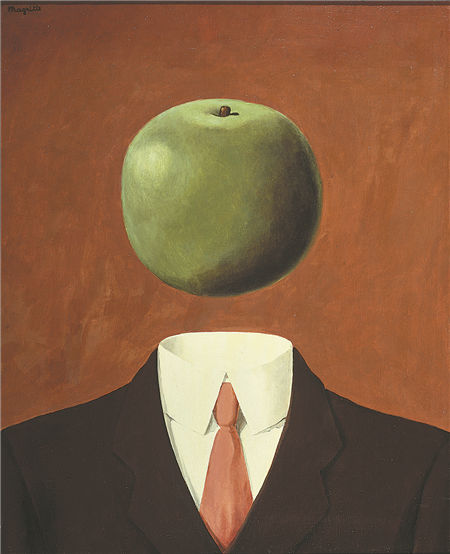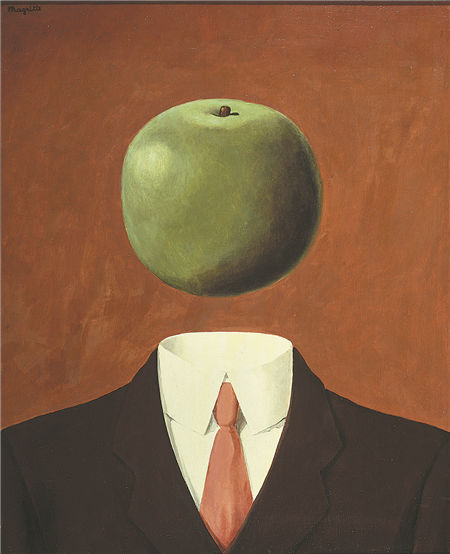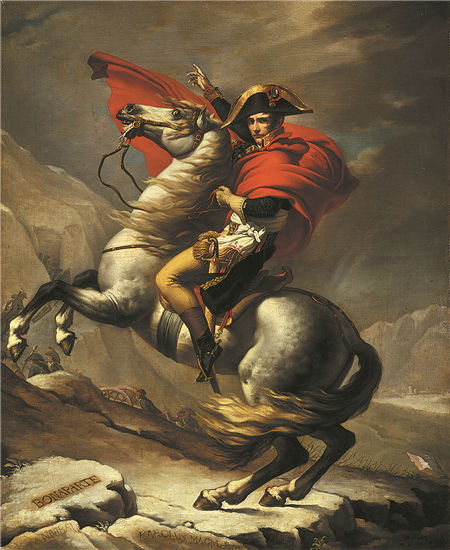
Vision and Gaze- Western Figure Paintings from Tokyo Fuji Museum
- 2023.04.25 - 2023.07.23

Abstract Idea, by Rene Magritte, is among the pieces to be exhibited in Shanghai. [Photo provided to China Daily]
From prehistoric drawings on cliffs and rocks, to the Mona Lisa in which Leonardo da Vinci produced an iconic smile of timeless charm, portrait painting has been a recurring practice of people seeking identity and the meaning of their presence in a world of immensity.
As a well-known quote in Shakespeare's Hamlet goes: "What a piece of work is a man. How noble in reason, how infinite in faculties, in form and moving how express and admirable, in action how like an angel, in appreciation how like a god!"
Among the weighty collection of Western art at the Tokyo Fuji Art Museum in Japan, there is a section celebrating the dynamics and diversity of portrait paintings from the 16th to 20th centuries.
Now, select works from this collection are touring China, from Shenyang, Liaoning province, to Shanghai, the booming cultural metropolis.
They were first shown at Vision and Gaze, an exhibition at Liaoning Provincial Museum that ended on April 5 after drawing more than 300,000 visitors in three months.
Then they will travel to the Power-long Museum in Shanghai for another exhibition, which will kick off on Wednesday and run until July 23.
Opened to the public in 1983, the Tokyo Fuji Art Museum has assembled a collection of more than 30,000 works from different periods of time and of various genres. In 2018, it loaned selected Western paintings in its collection to the Tsinghua University Art Museum in Beijing, offering local audiences a rare glimpse of its artistic assets. Some pieces shown then are now revisiting the country, including Jupiter and Thetis, by French painter Jean-Auguste-Dominique Ingres, and Bonaparte Crossing the Great St. Bernard, a work attributed to the studio of French artist Jacques-Louis David.

Bonaparte Crossing the Great St. Bernard, a work attributed to the studio of French artist Jacques-Louis David, is among the pieces to be exhibited in Shanghai. [Photo provided to China Daily]
Unlike the exhibition at the Tsinghua University Art Museum five years ago, which gave a general review of Western art, works shown this time are arranged progressively, showing the changing roles of figure painting in history and various ways to present portrait figures, says Zhang Huiwen, a curator at Art Exhibitions China, the institution that has organized the tour of Tokyo Fuji Art Museum's collection.
"One sees in these works changes in the central figures in Western painting: first gods, then royalty, elites and finally, ordinary people," she says, adding that the exhibition gathers together motifs depicted in different social backgrounds and under the brushes of different artists, by which the audience is introduced to a diverse history of images.
Zhang says that with a global vision, Tokyo Fuji Art Museum has added to its collection the works of signature artists in Western art history throughout the centuries, covering styles as diverse as renaissance, baroque, rococo, neoclassicism, romanticism, impressionism and modernism.
She says that through gazing at these works, people will find their own answers about history and beauty. "Facing a piece of art, people may see in it themselves, or others; they may find something familiar, or totally strange. Most of the time, they will feel that art is thought-provoking and challenges their fixed values."
This story was published on China Daily, on page 16, April 14. Author: Lin Qi
China Daily
